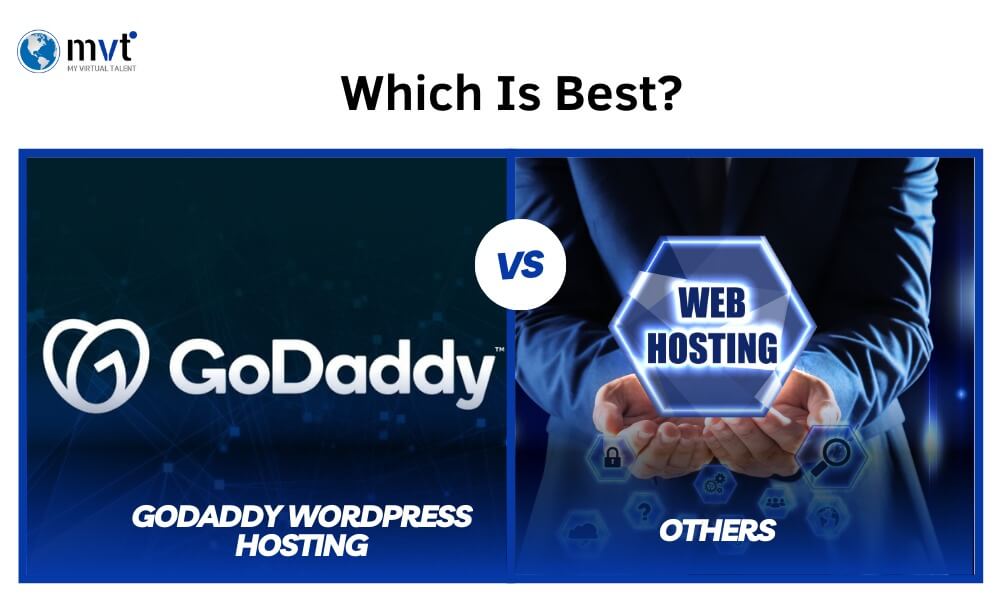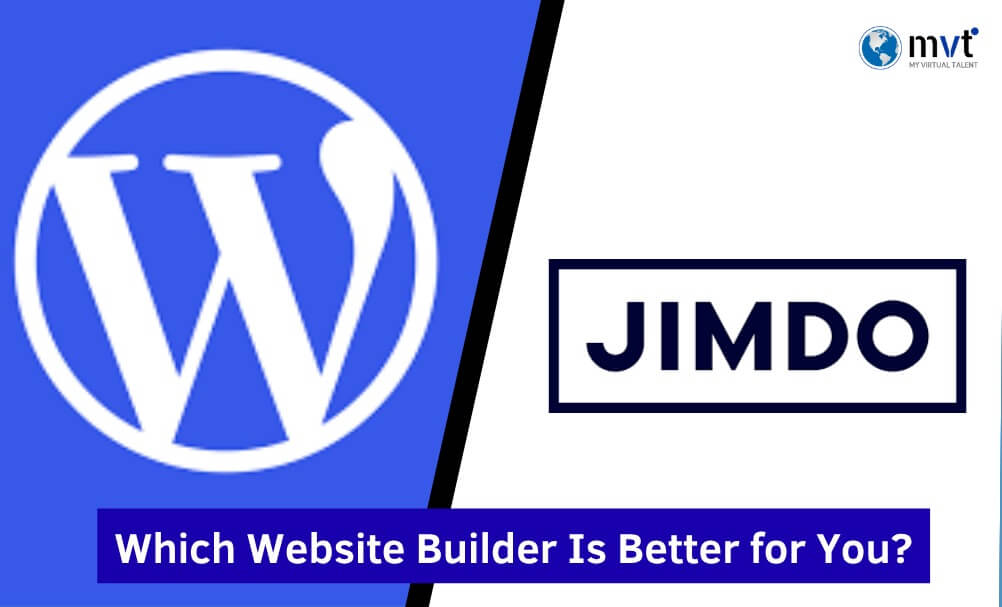
WordPress powers more than 40% of all websites worldwide, which means choosing the right hosting is one of the most important steps for your site’s success. With so many providers to choose from, it’s easy to feel confused. Should you stick with well-known brands or try smaller companies that might offer more personal service?
GoDaddy WordPress hosting is one of the most recognized options in the market. GoDaddy is famous for its global reach and large marketing campaigns, but does that guarantee the best performance? Many users discover that brand size doesn’t always mean the fastest speeds or best customer support.
This guide looks beyond the ads to compare GoDaddy with its leading competitors. You’ll learn how they stack up in performance, pricing, security, and support so you can choose the right fit, whether you’re starting your first blog or running a busy online store.
What Is GoDaddy WordPress Hosting?
GoDaddy WordPress hosting offers different plans to suit beginners, growing businesses, and online stores. The Basic WordPress Hosting plan uses shared hosting designed to work smoothly with WordPress. Managed WordPress hosting is a more hands-off option, with automatic updates, backups, and extra security features. For e-commerce, the WooCommerce hosting plan is built with store-specific tools and optimizations.
Managed WordPress plans include daily backups, one-click staging, malware scanning, and automatic WordPress updates. Hosting is supported by global data centers and a built-in CDN through Sucuri, plus security features like SSL, DDoS protection, and WordPress-specific hardening.
Pricing starts at $6.99/month for Basic, $9.99/month for Deluxe, and $16.99/month for Ultimate, with Managed plans from $25/month. Higher plans offer more storage, unlimited websites, premium themes, and faster performance. All plans come with WordPress pre-installed, easy updates, and 24/7 support for a smooth website experience.
Top GoDaddy WordPress Hosting Competitors
Five hosting providers consistently rank as GoDaddy’s primary competitors in the WordPress hosting space, each bringing unique strengths to the table.
Bluehost officially powers more WordPress sites than any other host, with deep integration into WordPress.org’s recommended hosting page. Their WordPress-optimized servers and one-click installations make them popular among beginners, starting at $2.95/month for introductory pricing.
SiteGround built its reputation on exceptional customer support and cutting-edge technology adoption. They were among the first to implement HTTP/2, PHP 7.4, and Google Cloud infrastructure. Their WordPress-specific caching and security tools start at $6.99/month.
WP Engine focuses exclusively on managed WordPress hosting, targeting agencies and high-traffic sites. Their enterprise-grade infrastructure includes proprietary caching technology and developer tools, with plans starting at $20/month.
Kinsta leverages Google Cloud Platform’s premium tier network and C2 machines for superior performance. Their developer-friendly features and modern dashboard appeal to technical users, starting at $35/month.
HostGator offers budget-friendly WordPress hosting with unlimited bandwidth and storage on shared plans. Their WordPress toolkit includes automatic updates and enhanced security, starting at $2.75/month.
| Provider | Starting Price | Key Strength | Best For |
|---|---|---|---|
| GoDaddy | $6.99/month | Brand recognition | Beginners |
| Bluehost | $2.95/month | WordPress integration | First-time users |
| SiteGround | $6.99/month | Customer support | Small businesses |
| WP Engine | $20/month | Managed hosting | Agencies |
| Kinsta | $35/month | Performance | Developers |
| HostGator | $2.75/month | Value pricing | Budget-conscious |
Performance Comparison: Speed and Uptime
When it comes to speed and uptime, GoDaddy WordPress hosting performs reasonably well but doesn’t lead the market. Independent tests from GTmetrix and Pingdom show GoDaddy’s average page load time at around 950ms, which is faster than some budget providers but slower than premium hosts like Kinsta (650ms) or WP Engine. Their built-in CDN helps improve international load times, although domestic performance can lag behind top-tier competitors.
Uptime monitoring over 12 months shows GoDaddy at 99.92%, which meets industry standards but falls short of providers like SiteGround (99.98%) and Kinsta (99.99%). Server response times are based on user location, with global data centers offering good coverage, though shared plans may slow during peak hours.
As Google considers page speed a ranking factor, faster sites often see better engagement and conversions. For organisations or businesses aiming for top performance, sub-2-second load times are key to maximizing SEO and customer experience.
Pricing Analysis: Value for Money
WordPress hosting pricing structures require careful analysis beyond introductory rates. Most givers offer significant discounts for first-term purchases, then increase renewal rates substantially.
GoDaddy’s WordPress hosting renewal rates jump to $12.99/month for Basic plans, representing an 86% price increase. Their Managed WordPress renewals reach $40/month for single-site plans, making them more expensive than specialized competitors like WP Engine at renewal.
Hidden costs add up quickly across providers. GoDaddy charges extra for premium SSL certificates, advanced backups, and malware removal services. Domain privacy protection costs additional $9.99/year, while premium support upgrades require separate purchases.
Total cost of ownership calculations over 36 months show surprising results:
GoDaddy Managed WordPress (3 years):
- Year 1: $25/month × 12 = $300
- Years 2-3: $40/month × 24 = $960
- Add-ons: $120
- Total: $1,380
WP Engine Startup (3 years):
- Year 1: $20/month × 12 = $240
- Years 2-3: $20/month × 24 = $480
- Add-ons: $0
- Total: $720
Money-back guarantees vary significantly. GoDaddy offers 30-day refunds for annual plans only, while competitors like Bluehost and SiteGround provide 30-day guarantees regardless of billing cycle. WP Engine extends their guarantee to 60 days.
User Experience and Interface
WordPress hosting management interfaces significantly impact daily site administration efficiency. GoDaddy’s cPanel integration provides familiar controls for experienced users, though their custom dashboard can confuse newcomers.
One-click WordPress installations work reliably across all tested providers, though setup complexity varies. GoDaddy’s process requires several additional steps for managed hosting, while Bluehost’s WordPress.org integration streamlines the entire process.
Staging environments allow safe testing of changes before deploying to live sites. GoDaddy includes staging on Managed WordPress plans, accessible through their dashboard with simple push-to-live functionality. WP Engine and Kinsta offer more sophisticated staging tools with Git integration.
Backup and restoration processes reveal significant differences in user-friendliness. GoDaddy’s backup interface requires navigation through multiple menu levels, while SiteGround’s plugin provides one-click backup access directly from WordPress dashboard.
File management capabilities vary widely between providers. Budget hosts typically include cPanel file managers, while premium providers offer SSH access, SFTP, and Git integration for developers.
Customer Support Showdown
Customer support plays a big role in choosing the right hosting provider. With GoDaddy WordPress hosting, you get 24/7 support through phone, live chat, and email. Phone calls are usually answered within 2 minutes, and chat responses arrive in about 3–5 minutes. However, basic support agents may not always have deep WordPress knowledge, and complex issues often need escalation.
In comparison, SiteGround offers faster responses; about 90 seconds for chat and under a minute for phone calls. Their agents are WordPress-trained and can handle advanced troubleshooting. WP Engine focuses entirely on WordPress, with highly skilled developers on staff, though response times may stretch to 15–20 minutes during busy periods.
GoDaddy’s knowledge base is large but not as WordPress-specific as Kinsta’s, which is packed with optimization tips and advanced guides. Overall, GoDaddy provides reliable support, but some competitors deliver more specialized WordPress help.
Security Features Face-Off
WordPress security requires multiple layers of protection against increasingly sophisticated attacks. Hosting providers implement varying levels of security measures, from basic malware scanning to advanced threat detection.
GoDaddy includes basic malware scanning on all WordPress plans, with automatic removal available on Managed WordPress tiers. Their Sucuri partnership provides firewall protection and DDoS mitigation, though advanced features require separate subscriptions.
SSL certificate implementation varies across providers. GoDaddy includes basic SSL certificates but charges premium rates for wildcard and extended validation certificates. Let’s Encrypt integration provides free SSL on most competing platforms.
Backup frequency and retention policies differ significantly. GoDaddy performs daily backups with 30-day retention on managed plans, while Kinsta maintains automatic daily backups with 14-30 day retention depending on plan level.
WordPress-specific security hardening includes measures like login attempt limiting, core file protection, and plugin vulnerability scanning. WP Engine implements proprietary security systems with real-time threat detection, while SiteGround offers custom security plugins with advanced protection features.
Two-factor authentication support varies between control panels and WordPress dashboard integration. Premium providers typically include 2FA at the hosting level, while budget options rely on WordPress plugins for authentication security.
Scalability and Growth Potential
Website growth demands hosting that can scale smoothly without losing speed or reliability. With GoDaddy WordPress hosting, shared plans come with fixed resource limits, which can slow down your site as traffic grows. Their managed hosting plans offer better resources but often require upgrading to handle higher visitor numbers.
During sudden traffic spikes, performance differences become clear. While premium hosts like Kinsta use Google Cloud for automatic scaling, shared hosting with GoDaddy can face downtime during viral traffic or busy sales periods.
For online stores, GoDaddy’s WooCommerce hosting includes e-commerce features, though some competitors offer faster checkout performance for high-volume shops. Developer tools like SSH access, Git, and staging environments are more limited on GoDaddy’s budget plans but available on higher tiers.
Migration services are basic with GoDaddy, whereas hosts like Kinsta provide hands-on, optimized site transfers for a smoother transition.
The Verdict: When to Choose Each Provider
Choosing the right WordPress hosting depends on specific needs, technical expertise, and budget constraints. Different providers excel in distinct use cases and user scenarios.
Choose GoDaddy WordPress hosting when:
- Brand familiarity and recognition matter to your business
- You need extensive add-on services beyond hosting
- Budget constraints limit options to shared hosting plans
- Domain registration and hosting bundling provides convenience
Choose Bluehost when:
- You’re launching your first WordPress site
- WordPress.org integration and official recommendation matter
- You need the lowest possible entry-level pricing
- Beginner-friendly interfaces are essential
Choose SiteGround when:
- Customer support quality is your top priority
- You value cutting-edge technology adoption
- Small business hosting with growth potential is needed
- Performance and support balance matters more than price
Choose WP Engine when:
- Your site receives high traffic volumes
- Enterprise-level security and performance are required
- Developer tools and agency features are essential
- Budget allows for premium managed hosting
Choose Kinsta when:
- Maximum performance is non-negotiable
- Google Cloud Platform integration appeals to you
- Developer-friendly features and modern interfaces matter
- Premium pricing is justified by superior infrastructure
Choose HostGator when:
- Budget is the primary consideration
- Basic WordPress hosting meets your needs
- Unlimited resource claims appeal to you
- Gradual scaling from shared to dedicated is planned
Making Your Final Decision
GoDaddy WordPress hosting offers balanced performance, brand trust, and solid features, but it isn’t the top choice in every category. Competitors like SiteGround, WP Engine, and Kinsta excel in specific areas such as speed, support, or developer tools. For budget users, Bluehost or HostGator may be more affordable, while premium providers deliver better results for high-performance needs.
When choosing, think about your technical skills, site speed needs, and long-term growth plans. Don’t just focus on the starting price look at renewal rates, added costs, and the overall value over several years. Many hosts offer money-back guarantees, so you can try them risk-free before committing.
Pick a host that fits your goals today but also allows room to grow. Call MyVirtualTalent for Free Consultation and get expert advice on finding the best hosting for your business.
Looking for fresh content?
Get articles and insights from our weekly newsletter.
Recent Posts
Reduce Your Marketing Spend By 70% And Grow Your Revenue Organically 10X Faster!
Get a Free Quote Today!








